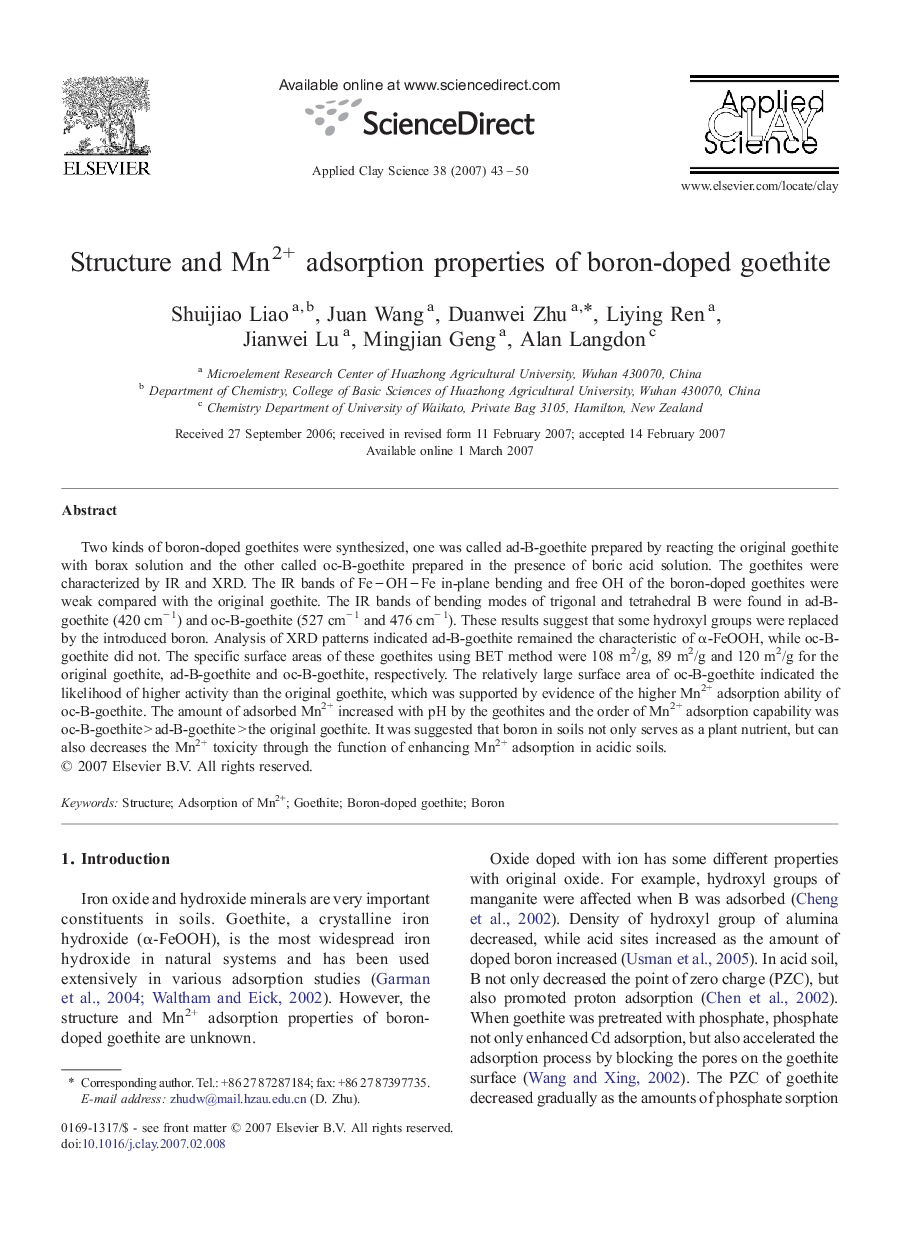| Article ID | Journal | Published Year | Pages | File Type |
|---|---|---|---|---|
| 1696502 | Applied Clay Science | 2007 | 8 Pages |
Two kinds of boron-doped goethites were synthesized, one was called ad-B-goethite prepared by reacting the original goethite with borax solution and the other called oc-B-goethite prepared in the presence of boric acid solution. The goethites were characterized by IR and XRD. The IR bands of FeOHFe in-plane bending and free OH of the boron-doped goethites were weak compared with the original goethite. The IR bands of bending modes of trigonal and tetrahedral B were found in ad-B-goethite (420 cm− 1) and oc-B-goethite (527 cm− 1 and 476 cm− 1). These results suggest that some hydroxyl groups were replaced by the introduced boron. Analysis of XRD patterns indicated ad-B-goethite remained the characteristic of α-FeOOH, while oc-B-goethite did not. The specific surface areas of these goethites using BET method were 108 m2/g, 89 m2/g and 120 m2/g for the original goethite, ad-B-goethite and oc-B-goethite, respectively. The relatively large surface area of oc-B-goethite indicated the likelihood of higher activity than the original goethite, which was supported by evidence of the higher Mn2+ adsorption ability of oc-B-goethite. The amount of adsorbed Mn2+ increased with pH by the geothites and the order of Mn2+ adsorption capability was oc-B-goethite > ad-B-goethite > the original goethite. It was suggested that boron in soils not only serves as a plant nutrient, but can also decreases the Mn2+ toxicity through the function of enhancing Mn2+ adsorption in acidic soils.
